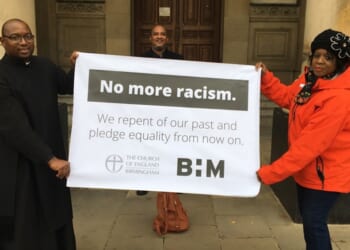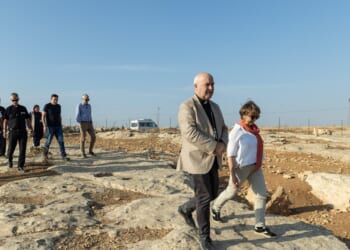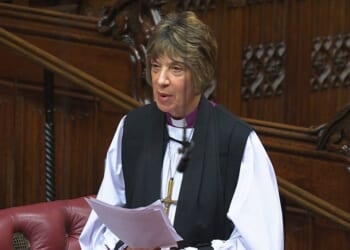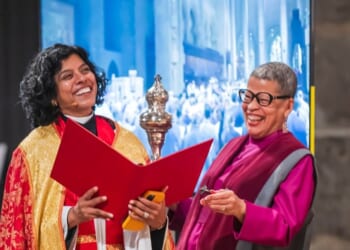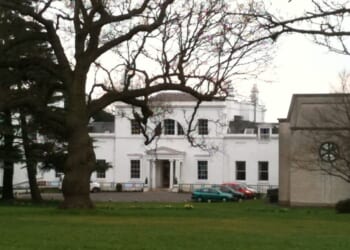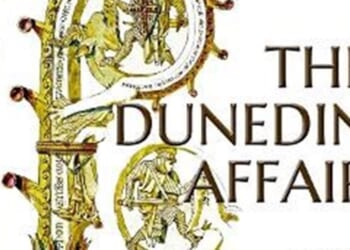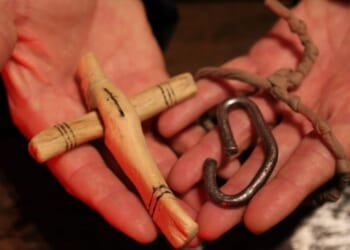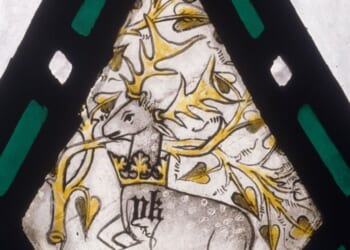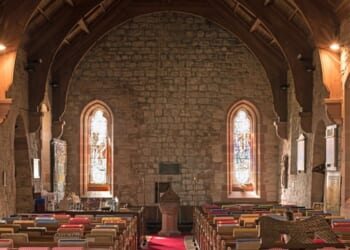EARLY accounts of mudlarks — people who scavenged whatever they could find of potential value from the shores of the River Thames — paint a picture of great poverty and need. The journalist and reformer Henry Mayhew, in his 1851 collection London Labour and the London Poor, described mudlarks as being “compelled from utter destitution to seek for the means of appeasing their hunger in the mud of the river”.
Historically, mudlarks lived close to the London river, where they cultivated expert knowledge of its tides. Twice a day, for just a few hours when the riverbank was exposed, they would search for objects along the shore to sell for whatever they could.
Today’s mudlarks do not do it out of desperation, but from a deep love of history and the excitement of holding an object that has not been touched in potentially hundreds or even thousands of years.
Objects dating as far back as Roman London have survived, thanks to what Kate Sumnall, the lead curator of the London Museum Docklands’ latest exhibition, “Secrets of the Thames”, describes as “the magic of the river”. The anaerobic nature of the Thames mud blocks out oxygen, which accelerates the decomposition process.
When the objects are covered and damp, they are preserved. She describes how mudlarking can reveal “how faith has shifted throughout time”, as objects are found and dated. “I find it really interesting to explore what the river means to Christianity,” she says: “the link with purification, washing away sins, and pilgrimage. The river has a spiritual presence; it’s something that, I think, really unites us across time.
“So many objects that have come out of the river really give an insight into the importance of Christianity in everyday life to medieval Londoners.”
Among the religious objects found and on display is a memento-mori bead, carved some time between the 1450s and 1550s. One side of it shows a woman’s face, the other a skull; fitting, as memento mori translates from Latin to mean “Remember you must die.” It would have been once strung with rosary beads so that the user could count the sequence of prayers recited, which, Ms Sumnall explains, served as a reminder of mortality and the afterlife.
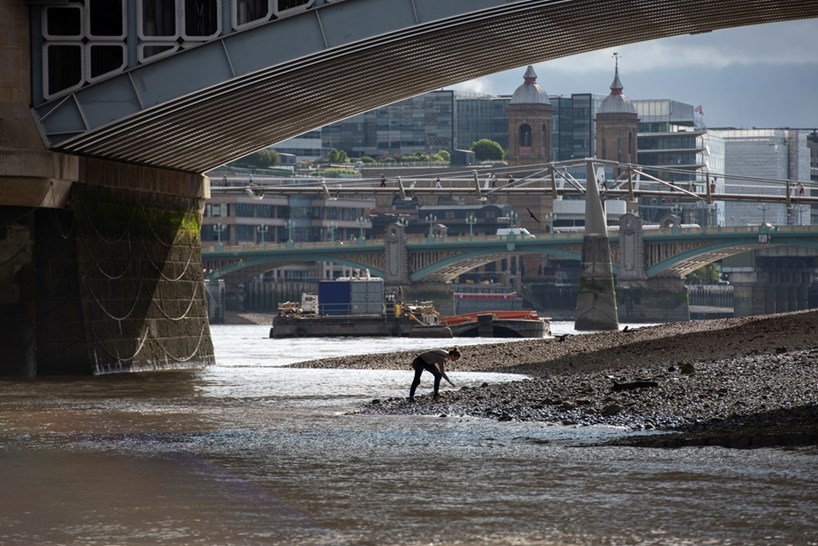 London MuseumA mudlark searches the foreshore
London MuseumA mudlark searches the foreshore
“It also speaks about the role of the Church and Christianity, and faith in the power of healing as well. In medieval London, medicine was nowhere like as good as it is today; so mortality rates were incredibly high. There weren’t hospitals and doctors in the same way that we know today. Often, you would go to religious houses for care if you were sick. But, when the medicine that you had available to you didn’t seem to be working, then the power of prayer had the effect to comfort and console.”
Dr Eliot Benbow, a post-doctoral research associate at the Institute of Historical Research, provided knowledge of prayer beads through his work, explaining that they were part of the fabric of everyday life in medieval London. He emphasises their personal importance, and that they were often a gift from one generation to another.
Records show that “shipments of rosary beads were transported in tens and hundreds of thousands from the Low Countries, particularly from places like Antwerp,” he says. “There seemed to be a roaring trade in these cheap devotional goods, in 15th- and early 16th-century England.”
OTHER notable items reclaimed from the river and on display are pilgrim badges. “These are really exciting objects,” says Dr Eyal Poleg, Professor of Material History at Queen Mary University of London. “They’re very cheap; so almost everyone can afford them, but, if you were very rich, you could have one made from gold and precious stones. Yet, the most basic one would be pewter, a very cheap metal. It’s mass production, consumerism, culture, but also from the devotional perspective.”
Dr Benbow, who wrote his thesis on pilgrim badges, says that, for mudlarks, “there’s a certain sense of wonder in finding them” — so much so that between 1857 and 1870, William “Billy” Smith and Charles “Charley” Eaton were responsible for the large-scale manufacturing of fake badges sold to antique dealers in the case known as the Billy and Charley Forgeries.
“They disappear almost completely with the Reformation, because they’re very much linked to Thomas Becket,” who was “the unofficial saint of London”, Dr Poleg says.
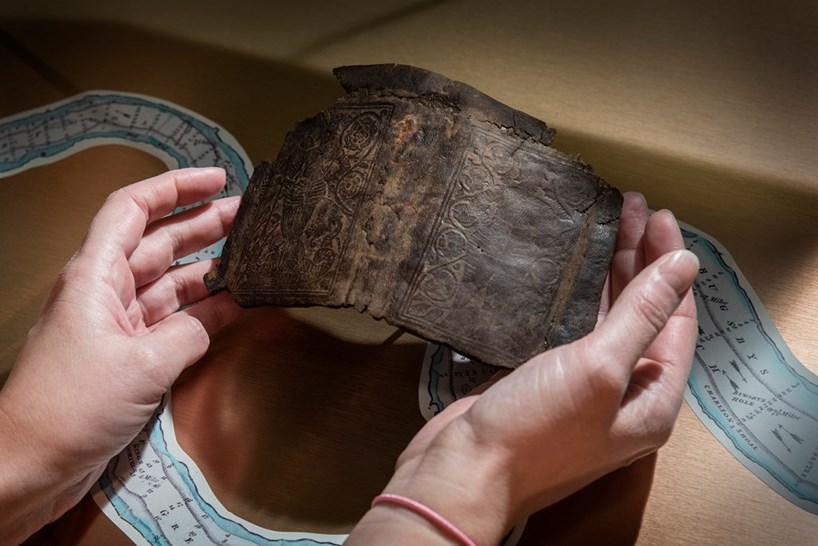 London MuseumEarly 16th-century decorated leather book cover. Research suggests that it is likely to be a rare surviving prayer book
London MuseumEarly 16th-century decorated leather book cover. Research suggests that it is likely to be a rare surviving prayer book
“You do get a huge number of badges related to Thomas Becket,” Dr Benbow agrees. “It’s slightly complicated, in that there’s a lot of generic bishop iconography that’s often associated with him, and it is possible that, sometimes, these things might be related to other saints,” as “the people who made a lot of these objects were often petty, peripatetic craftsmen, who would move around from shrine to shrine.”
The badges are relatively small (measuring approximately 3cm in diameter) and were designed for mass purchasing by pilgrims and travellers. Often found in London, particularly by London Bridge, Ms Sumnall explains that it is thought that the badges may have been deliberately thrown into the river, perhaps to ask for healing or divine intervention, or to give thanks at the end of a successful pilgrimage.
Sometimes, badges would turn up across England and on the continent, but what makes the objects found in London distinctive is the sheer variety of wares in the city’s material culture. “It indicates how vibrant a commercial space it was,” Dr Benbow explains. “And there are pieces of literature written about London as early as the 12th century, talking about all the different types of goods you could get, and the almost slightly overwhelming nature of that variety.”
TOM COUGHLAN, a research editor, has been mudlarking since 2018. He was inspired to take up the hobby when, wandering along the South Bank, he saw somebody searching the shoreline. The sight sparked memories from his childhood — reading about mudlarks in his grandmother’s old National Geographic magazine and digging in her garden for buried treasure — and he began exploring the foreshore himself.
“I think you need a powerful imagination to get into mudlarking, because you’re basically looking for other people’s rubbish that they’ve thrown away. But, if you’re into history and you’d like have a tangible connection to the past, then that is a great way of achieving it.
“Also, it gives you a very different and interesting perspective on London. You see the city from a different angle, and it connects you with the idea of it being this constantly evolving place.”
A great deal of “detective work” is required to determine an object’s origin, which can take up to three years. “It’s very much looking at the appearance of something, the style in which it’s being made, if we’ve seen anything like it before, if we have got anything similar in the museum, and usually that’s enough to start us off,” Ms Sumnall says.
Dr Benbow describes this as a reflective process. “There’s always a dialogue between archaeologists, historians, mudlarks, and museum curators about how we define what these objects are. There’s always a certain amount of ambiguity, especially with finds that come up off the foreshore of the Thames, because often placing them into a specific context has its challenges. It requires multi-level engagement from a variety of specialisms.
“There’s such an amazing long historical trajectory, from the hands of the people who made them to the people who use them, to people who threw them away, to the mudlarks who found them again on the foreshore, to the curators.”
Ms Sumnall says that mudlarks have been working closely with the museum since the 1970s. “At the time, they really spotted the potential of the mudlarks’ finds and their power to inform us about London’s past.”
AMONG the finds on display in the exhibition is a brown piece of leather binding, discovered by Mr Coughlan in Wapping, in June 2019.
“I just spotted this little bit of leather poking out of the mud, and I thought it might be a Victorian purse, because I could see some kind of patterning on it,” he says. “I cut the whole block of mud out, put it into a plastic bag and contacted the London Museum’s finds liaison officer, Stuart Wyatt, who told me to put it in the fridge and to meet him at 9 a.m. at the museum the next day.”
“My wife was furious,” he jokes, “because she didn’t want a stinky piece of extremely old leather in our fridge, but she tolerated it, and, several years later, it’s on display in the museum; so it’s pretty exciting.”
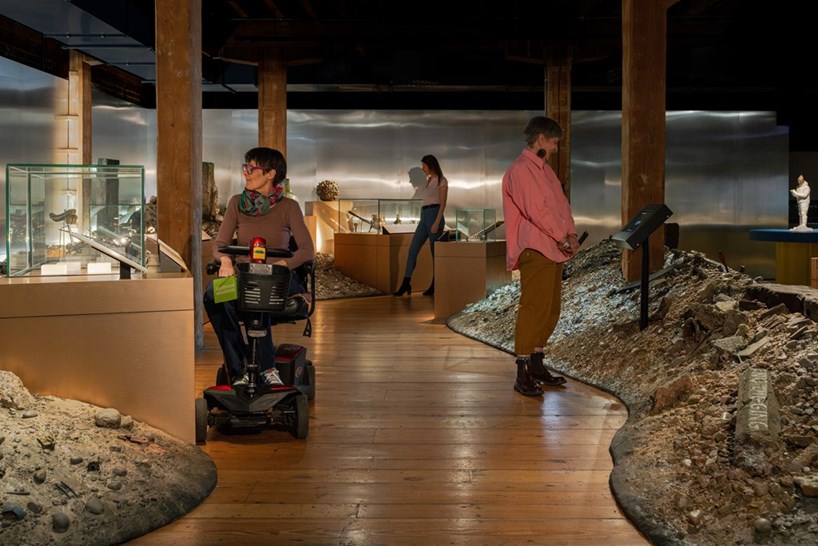 Seraphina Neville/London MuseumVisitors to the “Secrets of the Thames” exhibition in London Museum Docklands
Seraphina Neville/London MuseumVisitors to the “Secrets of the Thames” exhibition in London Museum Docklands
Dr Poleg, who is leading an Arts and Humanities Research Council project on historical and scientific analysis of ancient books and objects, conducted non-destructive analyses on the piece of leather, including CT scanning, DNA analysis, laser scanning, complex-imaging microscopy, X-ray fluorescence, and wood anatomy.
He and his team were able to recover the iconography and discover an image of St George and the dragon. They believe that the book dates to the early 16th century, and is a primer — a prayer book that taught children to read and sometimes even to write.
“It really tells you about a society of quite profound faith. These religious books were clearly things that people held very close and were very important to them,” Mr Coughlan says. The binding is extremely fragile, and the content of the book has dissolved in the water. “I guess if I hadn’t picked it up, it would have been completely destroyed within a few tides; so it’s very lucky.”
“So much of what’s on display in the exhibition is the material culture of everyday life,” Dr Benbow says. “It tells us something really interesting about medieval life, and particularly life in the 14th, 15th, and 16th centuries, where we know that living standards were changing.
“It shows how the economy changed, but fundamentally, also, I think it’s a reminder that people just sort of like stuff, really. Sometimes, that point becomes lost when we talk about people in the Middle Ages. When people imagine what medieval homes would have been like, they often think of some quite sparse, empty place. This sheer volume of material culture shows that there was a huge amount of disposable belongings, as so much of what’s found on the foreshore is stuff that people have chucked away.”
Ms Sumnall describes curating “Secrets of the Thames” as a “gift”. It is a chance, she says, to “really explore the appeal of mudlarking, the thrill of finding something on the foreshore, and the journey of discovery as you work out what it is, how would it be used, and what it would have meant to Londoners throughout the past.
“Even in a continually evolving city, some things don’t change: the river, the ritual, and our fascination with it, though it may contain a few new secrets by now.
“Secrets of the Thames” is at London Museum Docklands, No 1, West India Quay, Hertsmere Road, London E14, until 1 March 2026. Phone 020 7001 9844. londonmuseum.org.uk



